Whether we’re walking along the woodland edge to radio track box turtles just beginning to forage after emerging from their overwinter burrows, trudging through the wetlands to check traps and estimate the size of the remaining Boston population of Spotted turtles, or leading a school group of students who have raised endangered hatchling turtles in their classroom throughout the school year and are now releasing them back into their original wild population, we are constantly observing the natural world around us.
This early spring season is a favorite of many of our conservationists here at Zoo New England. The natural world seemingly comes to life slowly, then all at once, vibrant with budding life all around us, some life quite literally at our feet.
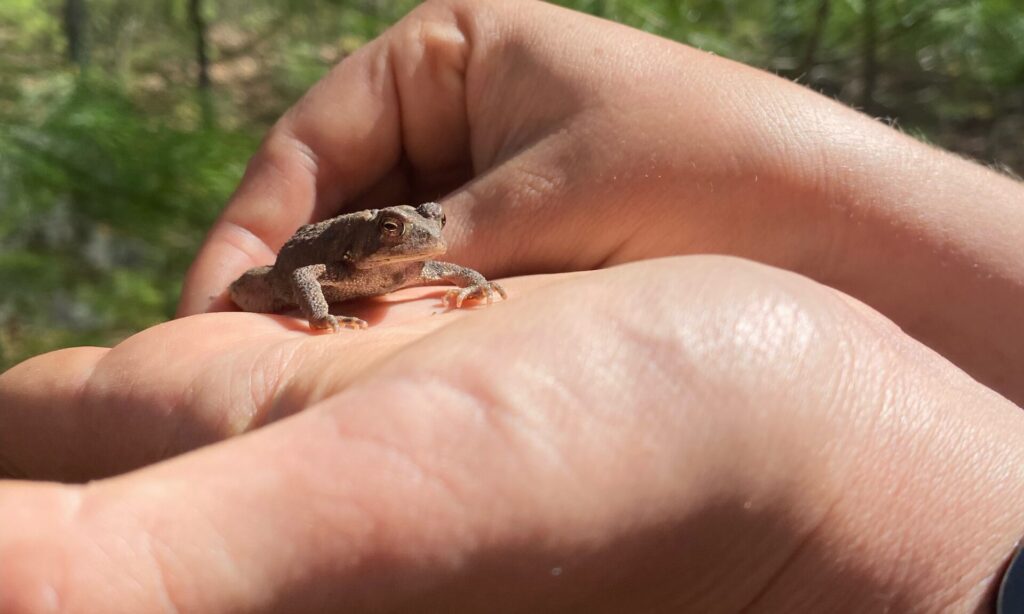
The American toad is a frequent sound and special sight during our fieldwork. With its distinctive calls that echo through the woodland, this amphibian is a master of camouflage, blending seamlessly into the leaf litter and underbrush. Its easily missed presence is a reminder of the rich biodiversity that thrives under our nose in these habitats.
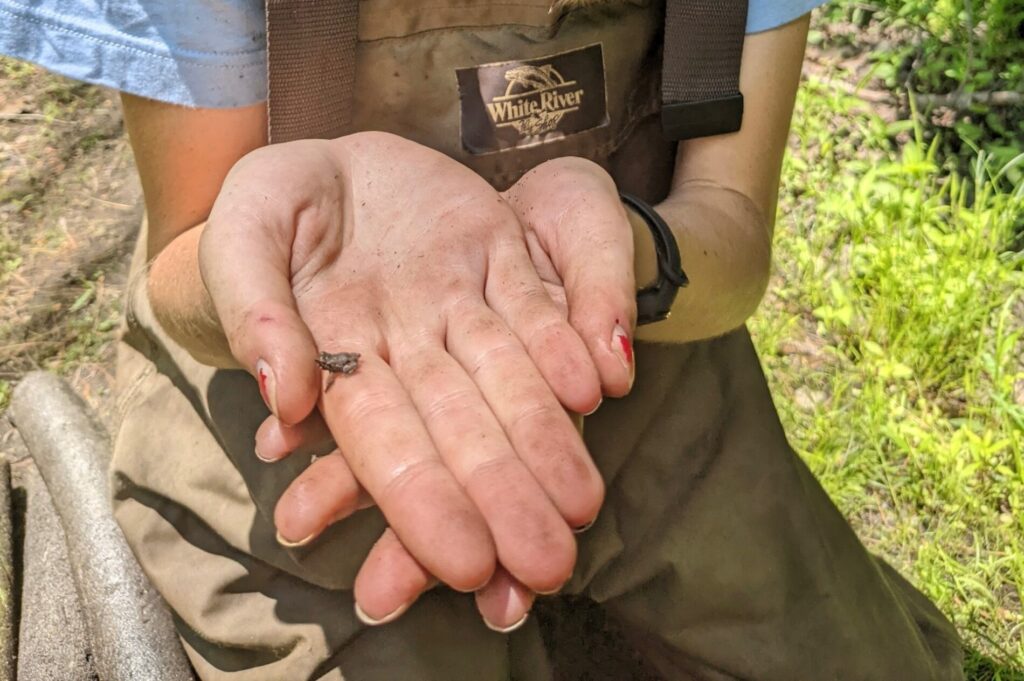
The often unnoticed presence of an adult American toad hopping through the forest floor makes noticing their fingernail-sized toadlets later in the season all the more noteworthy. American toads can lay between 4,000-12,000 eggs in long parallel strands, which will hatch out as tadpoles eventually metamorphosing into teensy tiny toads! Be careful where you step; you never know what little life is blossoming beneath you! Or maybe it’s above you…
As we traverse the woodlands and wetlands, we look up delighted to spot a tent hitched at the fork of two tree branches. Upon further inspection, we observe hundreds of tent caterpillars, each the size of pencil lead, busy at work. These caterpillars are known for their intricate webs, which they weave in the branches of trees.
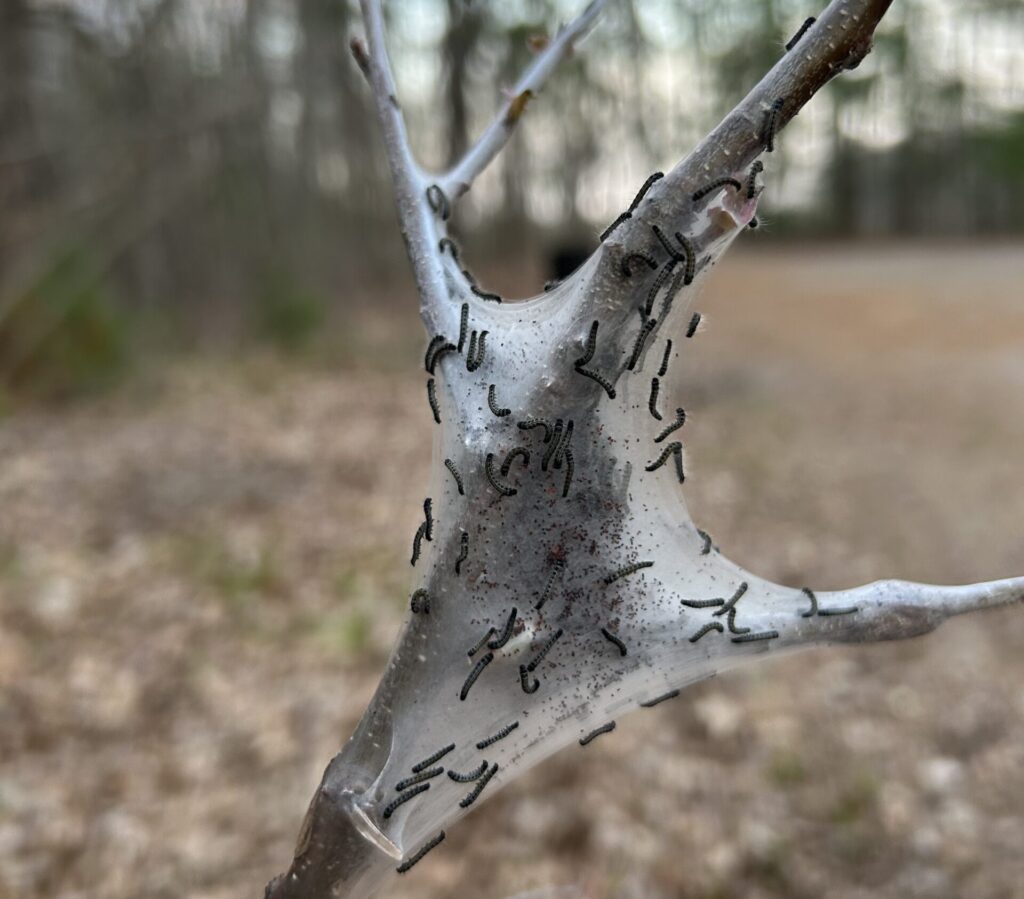
They overwinter as a mass of eggs, between 150-400 eggs all wrapped around the branch of what will soon be their host tree, often black cherry. Upon hatching, all of the individuals unite with one another, forming a colony—a fascinating example of cooperation for survival.
As young, they work together to weave these eye-catching tents that provide protection from predators like birds, as well as thermal protection from chilly spring nights. Individuals emerge the tent to feast on the leaves of the tree, so when you spot a tent yourself, check the leaves for any very hungry caterpillars!
Watching tent caterpillars in action, we are reminded of the unique and dynamic relationships within the ecosystem around us.
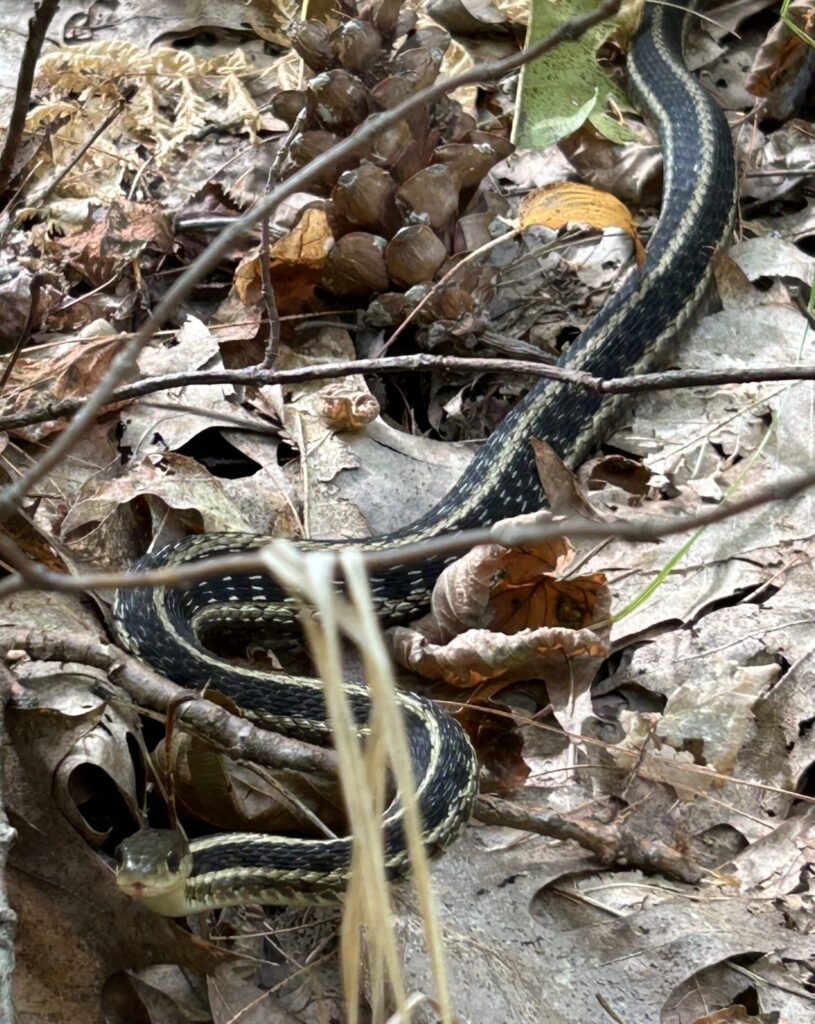
The common garter snake is a frequent encounter, as we gladly stumble upon them during their afternoon basking session. In early spring, these agile reptiles slither silently through the leaf debris, showcasing their impressive speed and stealth, with females making their way to males who release a pheromone to attract mates.
The females will later give live birth to a litter of about 10-40 newborns, each only about the length of a bookmark. These immature newborns tend to hang around mom for several hours or even days, despite her lack of parental care, before finally venturing off on their own to fend for themselves.
Snakes in general are wondrous with their ability to smell with just a flick of their tongue. While the iconic split in their tongue intimidates some, the snake is simply collecting particles of air to bring back inside their mouth, smelling the particles with a unique organ atop their mouth, the Jacobson’s organ. Next time you stumble upon one of these basking beauties, watch them give you a sniff!
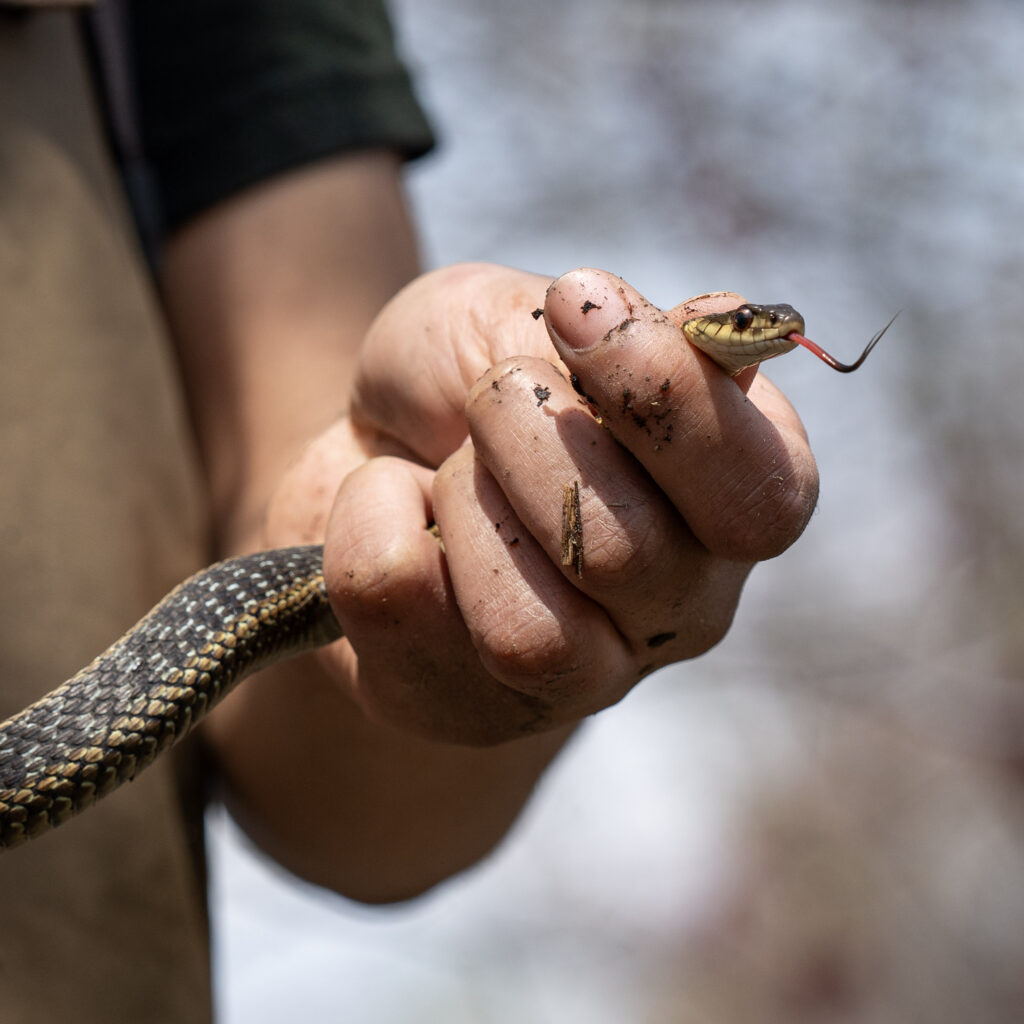
Each of these encounters enriches our understanding of the environment we work to conserve and highlights the interconnectedness of all species. As we continue our conservation efforts, we remain vigilant and appreciative of the diverse wildlife that shares these habitats with the turtles we work so hard to protect.
